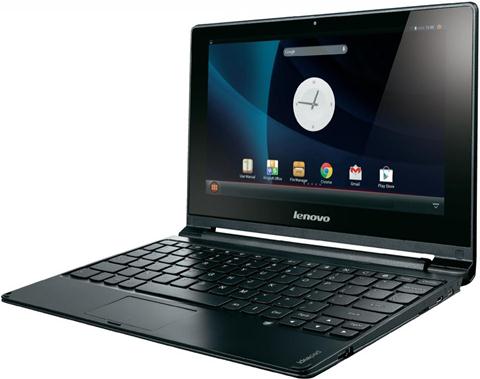superdudebuddy
Member
- Joined
- 7 Jan 2014
- Messages
- 857
- Reaction score
- 321
Is Android good enough to be a laptop operating system?
SUMMARY
Android apps are not made for use in a laptop and are made with the intent of being touched. That is a problem.

The Lenovo IdeaPad A10 runs Android 4.2 as the OS
With Windows 8, Microsoft wants one operating system that works well both on both desktop PCs and tablets. Google, meanwhile, has chosen Android as its tablet and smartphone interface while developing Chrome OS for laptops. So what happens when you put Android on a laptop with a touchscreen, like with the Lenovo Ideapad A10?
Not Quite Android
Many smartphone makers choose to put custom UI skins on Android. Usually, I’m not a fan of that. But on laptops, it’s a necessity. Android isn’t made for laptops, so to make it usable with this form factor, things need to change. Which is why Lenovo has introduced things like a custom dock which mimics the Windows Launch Superbar.
Android also needs a keyboard which steps away from the traditional Windows and Linux keyboards, with special buttons for common Android features like apps drawer, multi-tasking, etc.
But the downside of all this is that these are, in the end, cosmetic changes—the limit of what a company can do without moving beyond the core challenges Android faces as a laptop OS.
Read More Here
SUMMARY
Android apps are not made for use in a laptop and are made with the intent of being touched. That is a problem.

The Lenovo IdeaPad A10 runs Android 4.2 as the OS
With Windows 8, Microsoft wants one operating system that works well both on both desktop PCs and tablets. Google, meanwhile, has chosen Android as its tablet and smartphone interface while developing Chrome OS for laptops. So what happens when you put Android on a laptop with a touchscreen, like with the Lenovo Ideapad A10?
Not Quite Android
Many smartphone makers choose to put custom UI skins on Android. Usually, I’m not a fan of that. But on laptops, it’s a necessity. Android isn’t made for laptops, so to make it usable with this form factor, things need to change. Which is why Lenovo has introduced things like a custom dock which mimics the Windows Launch Superbar.
Android also needs a keyboard which steps away from the traditional Windows and Linux keyboards, with special buttons for common Android features like apps drawer, multi-tasking, etc.
But the downside of all this is that these are, in the end, cosmetic changes—the limit of what a company can do without moving beyond the core challenges Android faces as a laptop OS.
Read More Here
